2019-20 season's lectures
Please note - the details for this season have not yet been finalised
Unless otherwise stated, all lectures are in the Cultural Centre, calle Granada, Nerja and start at 6pm.

 Vivaldi is the one Baroque composer whose music is a direct reflection of the city in which it was composed. Listen to a Vivaldi concerto and hey presto you are transported directly to the heart of 18th century Venice.
Vivaldi is the one Baroque composer whose music is a direct reflection of the city in which it was composed. Listen to a Vivaldi concerto and hey presto you are transported directly to the heart of 18th century Venice.
The reasons for this are many. First, Vivaldi was a son of Venice and had an innate understanding of Venice’s unique aesthetic, which included a passion for colour, spectacle and display of emotion, points that are reflected time and time again in his music. Second, Venice solved its problems with abandoned and orphaned children in a altruistic manner and the way in which that was done impacted on Vivaldi as a composer, teacher and musical director. Third, Vivaldi’s health problems and his eccentricities as a man and a priest dictated his path as a musician and performer in Venice’s cultural life.
Against the luxurious backdrop of 18th century Venice, and with live musical performances, this lecture explores the amazing world of Vivaldi’s music – music that is as intrinsically Venetian as the canvasses of Canaletto.
Some of the themes appearing in the lecture ...
The Venetian Concerto
   |
Throughout its history, show and spectacle have been central to the image that the Venetians have projected to rest of the world. Whether this was a dignified procession from the Doge’s palace to the basilica, or the annual Marriage with the Sea, when the Doge cast a gold ring into the lagoon as a sign of true and perpetual dominion over the Adriatic (see below). These events have all helped to give Venice a sense of theatre, showmanship and drama.
Rituals of state reached their height during Vivaldi’s lifetime, when Venice consciously changed its identity from being a powerful force on the stage of European politics and international trade and commerce, to being a tourist attraction and a place of entertainment – a role that it has upheld to this day.
In the musical world of Venice, there is a particular form that may be said to parallel the phenomena of show and spectacle: the concerto – a form that even today is designed to entertain, to move, to amaze, and above all, to impress.
Vivaldi is particularly remembered for the writing of concertos (some 600 in all), in fact, it could be argued that Vivaldi is the inventor of the concerto, as we might know it today. In other words, a musical form that is designed to show off the skills of a soloist – or soloists – who are placed against the backdrop of an accompanying orchestra.
The Ospedali
In order to understand were charitable institutions for orphans and abandoned children, especially girls. Originally, these foundations were designed as ‘hotels’ for crusaders, but as the crusades abated, their function was changed into charitable foundations (orphanages), and became famous for their high grade level of tuition, and more important, for their high grade level of music making.
The four Venetian Ospedali attracted a wide range of high grade music teachers, for example after his arrival in Venice in 1670, Giovanni Legrenzi took a position as music teacher at the Ospedale Santa Maria dei Derelitti, remaining there until 1676. While in 1740, composer and harpsichordist Baldessare Galuppi was appointed director of music at the Ospedale dei Mendicanti.
The Ospedale della Pietà was the foundation with which Vivaldi had a lifetime connection (1703 -1739) and it was for them that the bulk of his concertos and religious music was written. The musical standard reached in the Pietà Chapel – and those of the other Ospedali – was so great, that large congregations were attracted to them in order to hear the choirs and instrumentalists perform, especially in Lent, when music in other churches tended to be less elaborate.
Edward Wright writing in the 1720s remarked:
 Every Sunday and holiday there is a performance of music in the chapels of these hospitals, vocal and instrumental, performed by the young women of the place, who are set in a gallery above and, though not professed, are hid from any distinct view of those below by a lattice of ironwork. The organ parts, as well as those of the other instruments are all performed by the young women. They have a eunuch for their master and he composes most of their music. Their performance is surprisingly good … and this is all the more amusing since their persons are concealed from view.
Every Sunday and holiday there is a performance of music in the chapels of these hospitals, vocal and instrumental, performed by the young women of the place, who are set in a gallery above and, though not professed, are hid from any distinct view of those below by a lattice of ironwork. The organ parts, as well as those of the other instruments are all performed by the young women. They have a eunuch for their master and he composes most of their music. Their performance is surprisingly good … and this is all the more amusing since their persons are concealed from view.
’
The public wanted to hear the girls play concertos, the girls needed concertos to play, and Vivaldi found employment by writing concertos. The writing of concertos, coupled with Vivaldi’s great skills as a violinist, made him become one of the greatest concerto writers of all time.
Venice and colour
 Colour, is something that you can find everywhere in Venice, whether it is used in the decoration that can be seen on the west end of St Mark’s Basilica. or whether it is the famous glass that is produced on the island of Murano, or even the highly decorated posters that advertise the carnival each year.
Colour, is something that you can find everywhere in Venice, whether it is used in the decoration that can be seen on the west end of St Mark’s Basilica. or whether it is the famous glass that is produced on the island of Murano, or even the highly decorated posters that advertise the carnival each year.
In the world of art, the Venetian painters were famous for their use of colour; and one of the most celebrated colourists of all time was Paolo Veronese, based in Venice, and his Wedding at Cana shows his skill in this direction to an astonishing degree (see below)
This passion for – and use of – colour may in part reflect the ready availability of high quality pigments such as ultramarine, made from the semi-precious stone lapis lazuli imported from Afghanistan. And this, joined with the fact that canvas, the fabric of ship sails, was more popular as a support for paintings in Venice than anywhere else and may have stimulated a preference for the bold, highly visible, expressive brushwork that is such a distinctive feature of Venetian painting. It could be argued then, that the long tradition Venice had for trading over seas, as well as its importance as a seafaring port, may well have had a direct influence on this aspect of the arts. This is cause and effect.
Turning now to music, I can think of no other Baroque composer who could be said to have more ‘colour’ in his music than Vivaldi. And by colour, I don’t just mean the subtleties of harmonic and rhythmic textures that lie in his compositions, but the highly imaginative scoring of his concertos and religious music. In other words, his choice of musical instruments for a particular work in question.
Vivaldi used a greater range of instruments in his music than any other composer that I know of during this period, and the range of instruments in turn reflects the variety of instruments played by the young girls at the Ospedale della Pietà: mandoline, tromba marina, recorders, bassoon, clarinet, trumpet, lute, horn etc .
About Peter Medhurst
 Peter Medhurstʼs work as singer, pianist and lecturer-recitalist has taken him all over the world, and in the last few years he has toured New Zealand, Australia (twice) and South Africa (four times), and made frequent tours in Europe, giving performances in Berlin, Hamburg, Vienna, Salzburg, Brussels, Antwerp, Amsterdam, Paris and Spain.
Peter Medhurstʼs work as singer, pianist and lecturer-recitalist has taken him all over the world, and in the last few years he has toured New Zealand, Australia (twice) and South Africa (four times), and made frequent tours in Europe, giving performances in Berlin, Hamburg, Vienna, Salzburg, Brussels, Antwerp, Amsterdam, Paris and Spain.
Closer to home, he has presented events at the Barbican, St Johnʼs Smith Square, and the Royal Festival Hall on The Beethoven String Quartets, Mozart Operas, Vermeerʼs Music Lesson, The Twelve Days of Christmas, The Golden Age of Vienna, and 18th Century Venetian Art and Music. He has also directed presentations at the Wallace Collection, the National Gallery, the National Portrait Gallery and the V&A, linking the visual arts with the world of 17th & 18th century music making. He is a familiar face to audiences of music societies, regional theatres and British festivals (Henley, Isle of Man, Rye, Amersham, Stevenage, Chichester, Leith Hill, The Three Choirs etc) as well as to those of arts based organisations such as The Art Fund, The National Trust and The Arts Society. On the radio, his appearances have included Classic FMʼs Susanna Simonsʼ Show, Radio 3ʼs In Tune, Radio 4ʼs Arts Programme, and Midweek with Libby Purves. His recordings number For Two to Play, Schubert Songs, Handel and His Satellites and a CD of 16th and 17th century keyboard music entitled Tyme at the Virginalls. A new recording with pianist Jeremy Limb has been released entitled On Christmas Night on which he sings a range of Christmas carols and seasonal songs.
In addition to his appearances on the concert platform and in the lecture all, Peter Medhurst sets aside time to devise and lead tours abroad (often with Thomas Abbott, tour guide extraordinaire) for small groups of art and music connoisseurs. His particular interests are centred on the music, art and history of Vienna, Salzburg (with its strong Mozart link), Berlin, Halle (Handelʼs birthplace), Dresden, Venice (Vivaldiʼs birthplace), Rome, Madrid, and Delft (with its Vermeer and 17th century Dutch School connections) and over the years Peter has been associated with a number of travel companies including Cox and Kings, Travel Editions, Success Tours, Heritage Travel, Tailored Travel, and Voyages to Antiquity (see Tours for more information). Peter Medhurst was born of German and English parents, and did his musical training at the Royal College of Music where he studied singing with Redvers Llewellyn and Edgar Evans, organ with Richard Popplewell, composition with Justin Connolly and music history with Else MayerLismann, Christopher Grier and Joseph Horowitz. In 1978, a scholarship from the Austrian government gave him the opportunity to have coaching with the accompanist Erik Werba at the Mozarteum in Salzburg. On his return to England he took harpsichord lessons with Ruth Dyson, who became his accompanist and fellow keyboard duettist in a professional partnership that lasted until her death nearly 20 years later.
Over the years Peter Medhurst has lectured for the universities of Kent and Surrey, directed a wide range of choirs, vocal ensembles and instrumental groups, and adjudicated and given masterclasses for the British Federation of Music Festivals.
He is director of The Classical Music Company an organisation that promotes special musical events, creates films about the arts, produces recordings and organises specialist music tours to unusual locations both at home and abroad.
Peter last spoke to us in December 2014, about in the wake of Handel: the impact of Handel on 300 years of British Culture

Cádiz, in Andalusia, the ancient site of Gadir, is the oldest city in the Western World. Founded by the Phoenicians more than three thousand years ago, its History speaks of gods, heroes, adventures, conquests and journeys in the dawn of Time. The unknown Kingdom of Tartesos, the great Empires of the East, the Egypt of the pharaohs and the Homeric demigods, all their secrets are kept in the History of a city, Gadir-Cádiz, which today presents the proofs of its mythical and glorious past. And we shall travel through time and History to get closer to that mythical and fabulous ancient world of Gadir, the Phoenician Western Pearl.
About Manuel Parodi
Manuel Parodi, historian and archaeologist, has been working on the History of Archaeology in Northern Morocco and Southern Spain since 2005, and has published several books and articles regarding this particular matter. He has also been working in several Archaeological and Historical Research Projects in Morocco since 2005, including the Archaeological Museum of Tetouan, its Archives and historical documents and records.
Manuel talked to us in November 2016 about The Spanish Indiana Jones in North Africa 1900-1948.


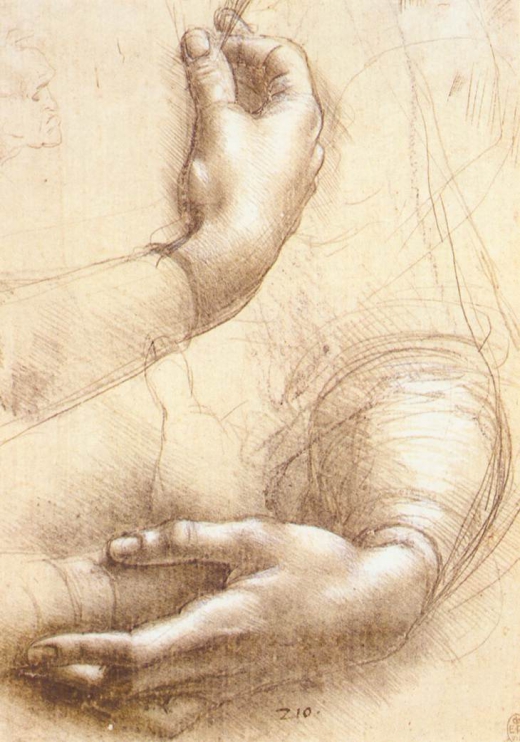 The hand has been an underestimated but nevertheless central component of visual art. Leonardo stated that the hand could be as expressive as the face and acknowledged that the structure and function of the hand was the organ through which an artist expresses himself. His remarkably accurate drawings of the six layers of anatomy of the hand are testament to his pursuit of detail. He used this knowledge in the narrative of the Last Supper. In Leonardo’s version of the Vitruvian Man the hand is used as the unit of measurement to demonstrate the concept of divine proportion. This talk reviews the way in which Leonardo investigated the form and function of the hand. His paintings and narrative art are reviewed to demonstrate how he used this knowledge to depict the hand as a form of expression.
The hand has been an underestimated but nevertheless central component of visual art. Leonardo stated that the hand could be as expressive as the face and acknowledged that the structure and function of the hand was the organ through which an artist expresses himself. His remarkably accurate drawings of the six layers of anatomy of the hand are testament to his pursuit of detail. He used this knowledge in the narrative of the Last Supper. In Leonardo’s version of the Vitruvian Man the hand is used as the unit of measurement to demonstrate the concept of divine proportion. This talk reviews the way in which Leonardo investigated the form and function of the hand. His paintings and narrative art are reviewed to demonstrate how he used this knowledge to depict the hand as a form of expression.
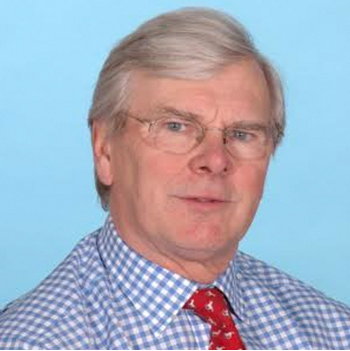
About Guy Rooker
"I come to The Arts Society not with a background in the arts but from the world of science in general, and surgery in particular. I describe myself as a retired surgeon with a lifelong passion, fascination, and admiration for the work of Leonardo da Vinci. I consider that the contribution he has made to both the world of art and the investigation of scientific concepts to be quite unique and extraordinary in the way that so many of his pioneering investigations have contributed to the understanding of our world today."
YouTube video about da Vinci's heart valve idea
The following article was published in The Conversation.

The original is here:

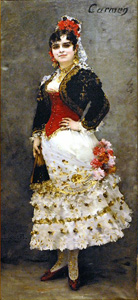
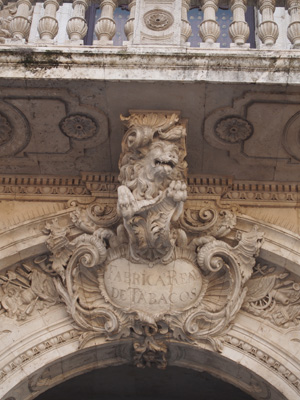 Bizet’s opera Carmen, about the flamboyant, tragic figure of the gypsy woman Carmen and her lovers, the soldier Don Jose and the bullfighter Escamillo, is based on a novella by Prosper Mérimee. Mérimee was an archaeologist and historian as well as a novelist, and much of his descriptive writing, carried across to the opera’s libretto, was based on observation. Carmen famously worked in the tobacco factory in Seville but, far from being a dusty warehouse, this Baroque palace was the second-largest building in Spain. Now part of Seville University, it preserves many of the tobacco factory’s furnishings, and celebrates its role as Carmen’s workplace. Candilejo, the street where Lillas Pastia had his tavern, is still visitable, as is the bullring of the Plaza de Toros de la Maestranza, on the bank of the Guadalquivir river, where Carmen meets her fate. Simon Rees has worked as dramaturg on many productions of Carmen, and has photographed these and other locations in Seville, as well as researching costumes, sets and original productions, and musical illustrations, to give a vivid picture of Bizet’s most famous opera.
Bizet’s opera Carmen, about the flamboyant, tragic figure of the gypsy woman Carmen and her lovers, the soldier Don Jose and the bullfighter Escamillo, is based on a novella by Prosper Mérimee. Mérimee was an archaeologist and historian as well as a novelist, and much of his descriptive writing, carried across to the opera’s libretto, was based on observation. Carmen famously worked in the tobacco factory in Seville but, far from being a dusty warehouse, this Baroque palace was the second-largest building in Spain. Now part of Seville University, it preserves many of the tobacco factory’s furnishings, and celebrates its role as Carmen’s workplace. Candilejo, the street where Lillas Pastia had his tavern, is still visitable, as is the bullring of the Plaza de Toros de la Maestranza, on the bank of the Guadalquivir river, where Carmen meets her fate. Simon Rees has worked as dramaturg on many productions of Carmen, and has photographed these and other locations in Seville, as well as researching costumes, sets and original productions, and musical illustrations, to give a vivid picture of Bizet’s most famous opera.
About Simon Rees
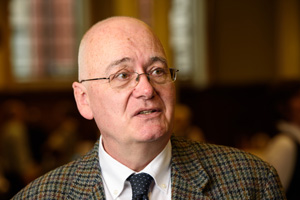 Studied at Colchester Royal Grammar School and Trinity College, Cambridge, receiving a BA and an MA in English Literature. Taught in Italy and Japan, exploring the art and architecture of both countries. From 1989 to 2012 was Dramaturg at Welsh National Opera in Cardiff, working with set, costume and props designers and giving lectures on their work in opera production. Now a freelance writer and lecturer, lectures widely on opera, art history and literature, travelling extensively with travel companies. Has published several novels, including the award-winning The Devil's Looking-Glass, poems and opera librettos.
Studied at Colchester Royal Grammar School and Trinity College, Cambridge, receiving a BA and an MA in English Literature. Taught in Italy and Japan, exploring the art and architecture of both countries. From 1989 to 2012 was Dramaturg at Welsh National Opera in Cardiff, working with set, costume and props designers and giving lectures on their work in opera production. Now a freelance writer and lecturer, lectures widely on opera, art history and literature, travelling extensively with travel companies. Has published several novels, including the award-winning The Devil's Looking-Glass, poems and opera librettos.

 Stolen Masterpieces looks at famous works of art that have been stolen, such as Munch's The
Stolen Masterpieces looks at famous works of art that have been stolen, such as Munch's The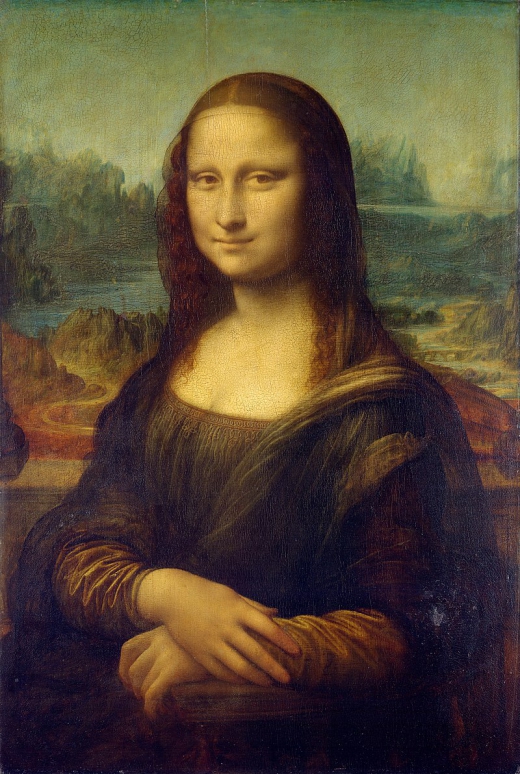 Scream and the masterpieces that were stolen from the Isabella Stewart Gardner Museum in Boston, including works by Vermeer and Rembrandt. Other works that I’ll look at include Leonardo da Vinci’s Madonna with the Yarnwinder and Titian’s Rest o
Scream and the masterpieces that were stolen from the Isabella Stewart Gardner Museum in Boston, including works by Vermeer and Rembrandt. Other works that I’ll look at include Leonardo da Vinci’s Madonna with the Yarnwinder and Titian’s Rest o n the Flight into Egypt. I'll talk about why thieves steal and the appeal of famous masterpieces. I will also discuss how art theft is the 3rd largest international crime after the selling of drugs and arms, and the implications of this.
n the Flight into Egypt. I'll talk about why thieves steal and the appeal of famous masterpieces. I will also discuss how art theft is the 3rd largest international crime after the selling of drugs and arms, and the implications of this.
About Shauna Issac
Studied at Courtauld Institute and Birkbeck College, London and regularly lectures at the Sotheby's Institute of Art. Currently managing an art recovery company and served on the Looted Art Working Group for the Holocaust Era Assets Conference in Prague, where she was instrumental in drafting the Terezin Declaration on Nazi looting, which was ratified by 46 countries. 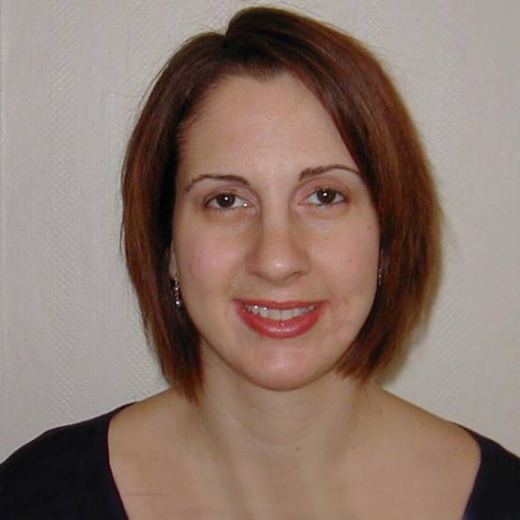 Has given talks to the Focus-Abengoa Foundation Symposium in Seville, the Courtauld Institute, the Documentation Centre of World War II Cultural Assets, Sotheby's and Microsoft. Publications include articles for The Art Newspaper, Art & Law Magazine and Art Quarterly.
Has given talks to the Focus-Abengoa Foundation Symposium in Seville, the Courtauld Institute, the Documentation Centre of World War II Cultural Assets, Sotheby's and Microsoft. Publications include articles for The Art Newspaper, Art & Law Magazine and Art Quarterly.

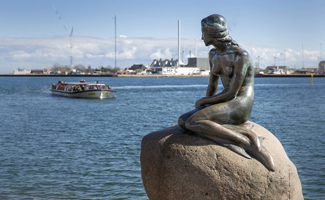
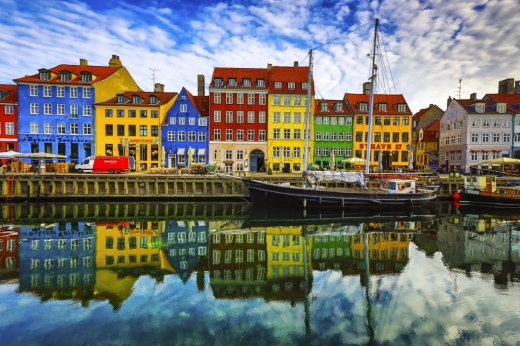 We have already caught up with and overtaken our 20th century vision of the future, we are now in a more subtle phase. We are talking now about integrating layers, joining things up, creating ecosystems that are whole, using technology to harmonize what we have.
We have already caught up with and overtaken our 20th century vision of the future, we are now in a more subtle phase. We are talking now about integrating layers, joining things up, creating ecosystems that are whole, using technology to harmonize what we have.
Copenhagen is already ahead of much of Europe in developing principles of sustainability, it is setting an example for the rest to follow. The city is a soundbox of ideas, many as yet unrealized, that will give us hope for our collective future.
About Rafael Anderson
Rafael Anderson graduated with honours from Sheffield University in 1986 after which he spent the formative years of his career in Hong Kong and China working on several international prestigious projects.
On returning to London he set up in private practice and built his own house in Islington for which he received a Civic Trust Award. He has participated in numerous open and invited international architectural competitions, his work has been exhibited at the Royal Academy in London and widely published. He has worked in Copenhagen and Stockholm on projects won through competition.
Rafael has also worked in India where he constructed India's first boutique hotel in Delhi.
For the past several years Rafael has been living and working in Granada and the Alpujarra. His latest project has been the restoration of a historic early sixteenth century moorish house in the Albayzin in Granada.
Rafael is a frequent visitor; his last talk was in February 2017, when he talked about Barcelona


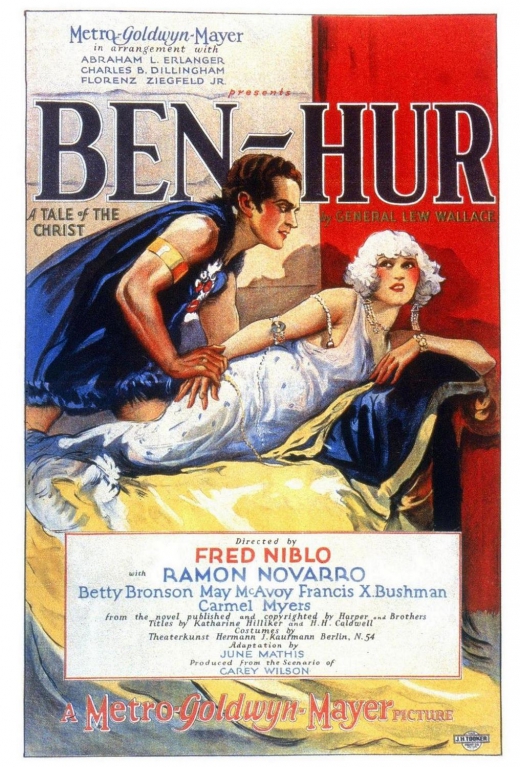 The moving image has been a powerful source for imagination from the first moment a magic lantern flickered into life in the 17th century.
The moving image has been a powerful source for imagination from the first moment a magic lantern flickered into life in the 17th century.
In this lecture we will be looking at how the Motion Pictures industry first developed throughout the late 19th and early 20th centuries and how it was inspired by and inspired in turn some of the greatest artists of the early 20th century.
About Geri Parlby
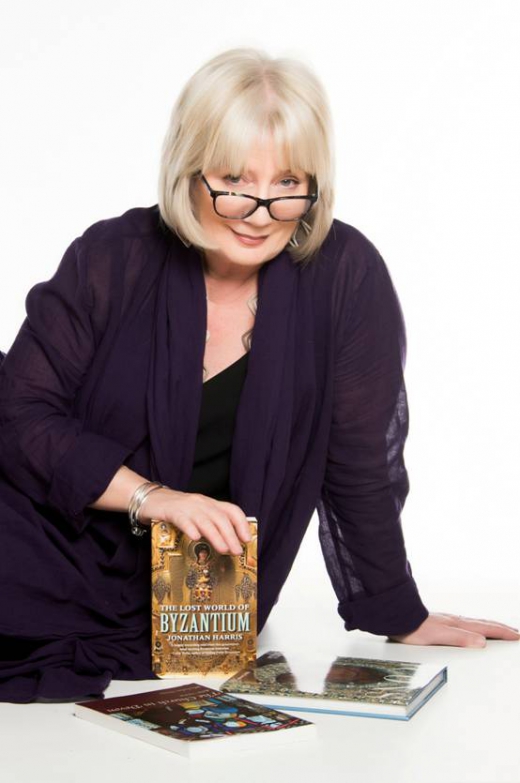 Geri is a former Fleet Street journalist and film PR. She has a Masters in History of Art from the Courtauld Institute and a Theology doctorate from Roehampton University in London. She has been lecturing for the past 12 years both in the UK and internationally. She is also principal lecturer on The Arts Society South West Area’s History of Art course and is an Honorary Research Fellow at Roehampton University and a Fellow of the Royal Society of Arts.
Geri is a former Fleet Street journalist and film PR. She has a Masters in History of Art from the Courtauld Institute and a Theology doctorate from Roehampton University in London. She has been lecturing for the past 12 years both in the UK and internationally. She is also principal lecturer on The Arts Society South West Area’s History of Art course and is an Honorary Research Fellow at Roehampton University and a Fellow of the Royal Society of Arts.
Geri entertained us in January 2016 with her lecture Shock! Horror! Probe! The art and artifice of ‘Fleet Street’: A newspaper story in pictures.

Featuring:
- The 2015 film Woman in Gold starring Helen Mirren
- An introduction by Anne-Marie O'Connor
|
About the film
|
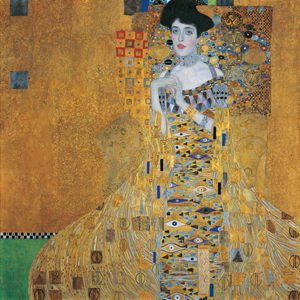 This is a story of art and justice, about an artist, Gustav Klimt, who was born in poverty and became a celebrated modernist; and his progressive intellectual Jewish female patrons, who also supported Freud and other cutting edge intellectuals of Vienna’s fin-de-siecle golden age. These remarkable women were persecuted when Hitler came to Vienna, and their Klimt paintings were stolen.
This is a story of art and justice, about an artist, Gustav Klimt, who was born in poverty and became a celebrated modernist; and his progressive intellectual Jewish female patrons, who also supported Freud and other cutting edge intellectuals of Vienna’s fin-de-siecle golden age. These remarkable women were persecuted when Hitler came to Vienna, and their Klimt paintings were stolen.
For years there was no justice, until an elderly Vienna emigre in Los Angeles, Maria Altmann, stepped forward to demand the return of her family’s stolen Klimt paintings. This will be a slideshow with images of art and sepia photos from the era.
About Anne-Marie O'Connor
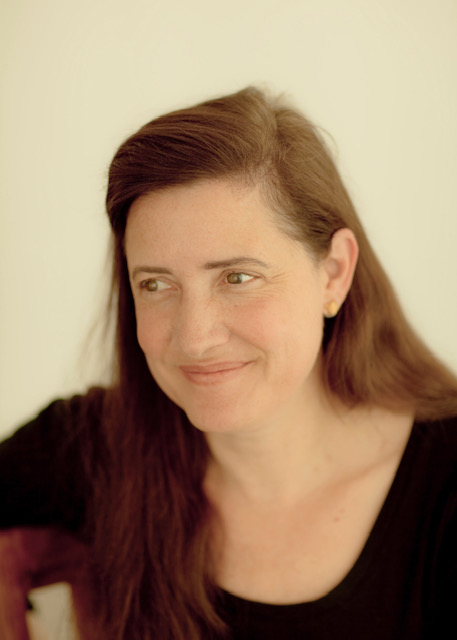
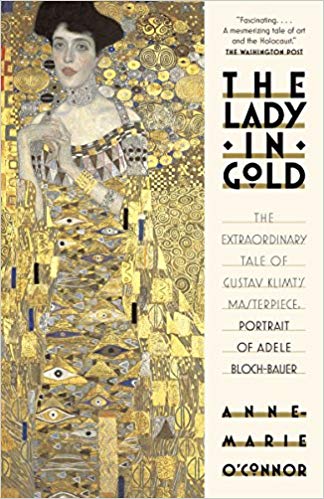 Anne-Marie O'Connor is a veteran foreign correspondent, culture writer and former war reporter who has covered everything from post-Soviet Cuba to American artists and intellectuals. O'Connor attended Vassar and the San Francisco Art Institute and graduated from the University of California at Berkeley, where she and fellow students co-created an award-winning documentary on the repression of mural artists after the 1973 military coup in Chile.
Anne-Marie O'Connor is a veteran foreign correspondent, culture writer and former war reporter who has covered everything from post-Soviet Cuba to American artists and intellectuals. O'Connor attended Vassar and the San Francisco Art Institute and graduated from the University of California at Berkeley, where she and fellow students co-created an award-winning documentary on the repression of mural artists after the 1973 military coup in Chile.
She covered the wars in El Salvador, Nicaragua, and Guatemala as a Reuters bureau chief in Central America; the Shining Path guerrillas in Peru, coups in Haiti and U.S. interventions in Haiti and Panama; and covered Cuba and Haiti for a newspaper chain. At the Los Angeles Times she chronicled the violence of Mexico's Arellano-Felix drug cartel, U.S. political convention; and profiled such figures as Nelson Mandela, George Soros, Joan Didion, John McCain, and Maya Lin.
Her story on Maria Altmann's effort to recover the family Klimt collection appeared in the Los Angeles Times Magazine in 2001. She has written for Esquire, The Nation, and The Christian Science Monitor, and is a contributor to the Washington Post in London.

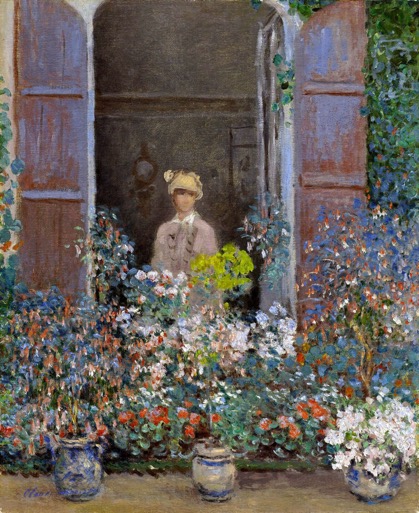
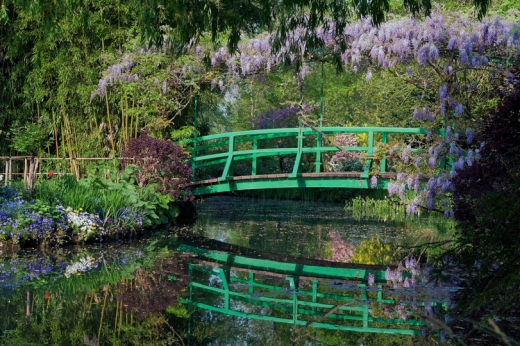 Everyone knows about Giverny, but few about the gardens that preceded them and the personal circumstances that were their motivation. Late in life Monet admitted that he may have owed his love of painting to his love of flowers and gardening, which he had developed in early youth as an antidote to his unhappiness. This lecture unfolds the detail behind that statement, which is both moving and beautiful, as Monet struggles with his family, his love and his art.
Everyone knows about Giverny, but few about the gardens that preceded them and the personal circumstances that were their motivation. Late in life Monet admitted that he may have owed his love of painting to his love of flowers and gardening, which he had developed in early youth as an antidote to his unhappiness. This lecture unfolds the detail behind that statement, which is both moving and beautiful, as Monet struggles with his family, his love and his art.
So many of his iconic works have their subject matter located in and around his garden, from his teenage home at Saint-Adresse, his rented homes at Argenteuil and Vétheuil to his great creation at Giverny, which became his only subject in his final years. Through diary entries and letters as well as paintings, the lecture reveals with specific horticultural and painterly detail the development of this life-long passion which climaxed in his monumental waterlily series, and which he shared with his other great gardening friend and colleague, Gustave Caillebotte.
About Brian Healey
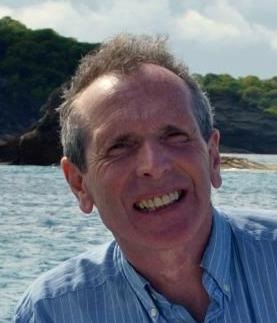 A senior modern languages teacher in an independent grammar school for many years, I have also enjoyed a successful parallel career since the 1980s as a professional artist and interior designer. Since 2006 I have been regularly appointed to a number of prestigious ocean and river cruise lines, either as resident artist, guest lecturer on art history or as destination speaker for more than forty countries. Most recently this work has successfully extended to art guiding through important towns and museums in France, Belgium, Holland and Spain.
A senior modern languages teacher in an independent grammar school for many years, I have also enjoyed a successful parallel career since the 1980s as a professional artist and interior designer. Since 2006 I have been regularly appointed to a number of prestigious ocean and river cruise lines, either as resident artist, guest lecturer on art history or as destination speaker for more than forty countries. Most recently this work has successfully extended to art guiding through important towns and museums in France, Belgium, Holland and Spain.
Brian talked to us in March 2017 about Vincent van Gogh and, in a separate lecture, introduced us to some of the glorious paintings of the Nordic Impressionists of the late 19th Century in his Midsummer Magic talk.

Including live music and dancing by Company Antonio Guerra.
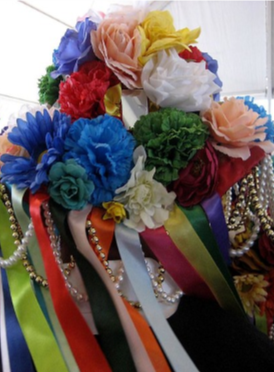
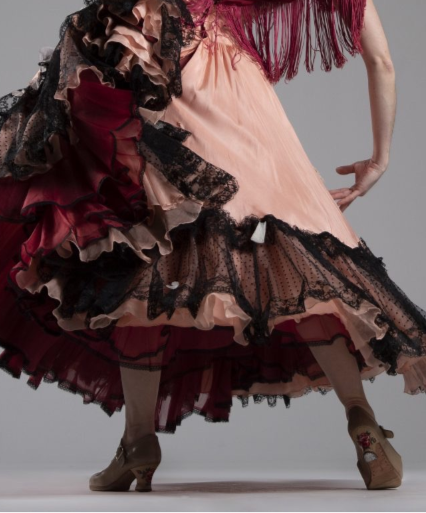 Flamenco was born in the West of Andalucía: in Cádiz, Seville and Jerez. However Málaga and its surrounding villages on the coast and in the mountains, were a hotspot of Flamenco. Here unique Flamenco music developed, like the Malagueña, the Abandolao, influenced by the Verdiales that only exist in the mountains of Málaga. This area, which was Arabic territory for 200 years more than the Flamenco cities in the west enjoyed different influences and it is notices in the music! Famous singers emerged from Vélez Málaga, like Juan Breva.
Flamenco was born in the West of Andalucía: in Cádiz, Seville and Jerez. However Málaga and its surrounding villages on the coast and in the mountains, were a hotspot of Flamenco. Here unique Flamenco music developed, like the Malagueña, the Abandolao, influenced by the Verdiales that only exist in the mountains of Málaga. This area, which was Arabic territory for 200 years more than the Flamenco cities in the west enjoyed different influences and it is notices in the music! Famous singers emerged from Vélez Málaga, like Juan Breva.
The echoes of the past will fill the air, Arabs, gypsies, smugglers. We will hear instruments unique for Málaga like the lute or the banderillo or castanets. Come and join us for a wonderful evening of authentic local Flamenco! Sung, danced and played by the wonderful Dance company of Antonio Guerra who treated us to a stunning performance last season, and narrated in English by Helen Sijsling.
About Antonio Guerra
Antonio Guerra has had a Flamenco dancing Academy in Vélez Málaga for more than 30 years. He has performed internationally and nationally on many stages. Last year he participated in our lecture The Heartbeat of the South, the history of Flamenco.
Ruben Portillo is a great guitar player from Vélez Málaga, performing abroad as well as locally. he loves looking for contacts with all kinds of musicians. He had concerts with Indian musicians which they called Bombay. He also organizes Flamenco performances in Velez Málaga and Torre del Mar under the name of Flamenco Abierto, mostly in the Peña Niño de Vélez. He performs nearly every Friday evening in the Peña in Vélez. He too participated in the lecture last year: The Heartbeat of the South.
Mamen Ruiz is also a local singer, a teacher of art as well, she has a lovely elegant voice, easy to understand. Together with Ruben she forms the group SAMARUCO.
Helen Sijsling is a great lover of Flamenco and has been a student of Antonio Guerra for more than 15 years. As they do not speak English she loves to help them to get their love for flamenco across and to explain in English what the music and dance is about.
Together they would love to share their love for the flamenco that came into existence in Vélez and in Málaga with you.

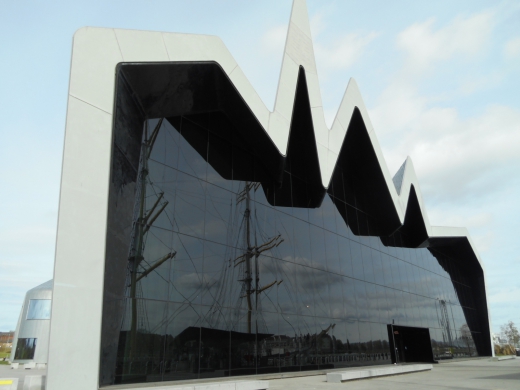
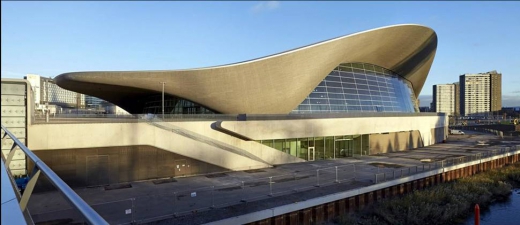 Before her untimely death in 2016, Dame Zaha Hadid was one of the most distinguished architects in the world. She was also a talented designer. As well as receiving numerous awards and honours, she received the Pritzker Prize for Architecture in 2004; the UK's most prestigious architectural award, the RIBA Stirling Prize, in 2010 and 2011; and the Royal Gold Medal in 2015. In 2012 she was made a Dame for services to architecture.
Before her untimely death in 2016, Dame Zaha Hadid was one of the most distinguished architects in the world. She was also a talented designer. As well as receiving numerous awards and honours, she received the Pritzker Prize for Architecture in 2004; the UK's most prestigious architectural award, the RIBA Stirling Prize, in 2010 and 2011; and the Royal Gold Medal in 2015. In 2012 she was made a Dame for services to architecture.
Zaha Hadid’s work is exciting because she developed a new form of architecture: she set architecture free by rejecting 90 degree angles. 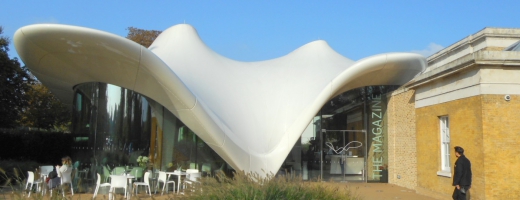 Her early abstract paintings are of particular interest because in them she began to create her visionary world where there is no definition, lines converge, and gravity disappears – all conceived before the advent of advanced computer software. From her early sharp-angled buildings she developed a fluid architecture, where floors, ceilings, walls - and even furniture - all form part of the overall design. Thus many of her later structures are extruded to the most extreme organic shapes in what she called a “seemless fluidity”.
Her early abstract paintings are of particular interest because in them she began to create her visionary world where there is no definition, lines converge, and gravity disappears – all conceived before the advent of advanced computer software. From her early sharp-angled buildings she developed a fluid architecture, where floors, ceilings, walls - and even furniture - all form part of the overall design. Thus many of her later structures are extruded to the most extreme organic shapes in what she called a “seemless fluidity”.
The lecture tells the story of this pre-eminent architect. We move around the world to look at some of her completed works, including her most famous building in the UK, the Aquatics Centre for the London Olympics in 2012, as well as unexecuted designs. Members who have a keen interest in cutting-edge design will be mesmerised by the daring yet brilliant structures of Dame Zaha Hadid.
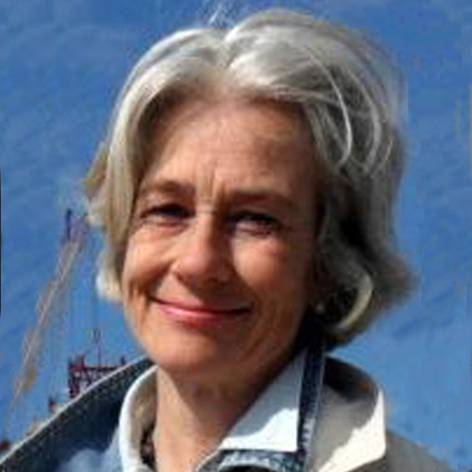 About Anthea Streeter
About Anthea Streeter
Studied the Fine and Decorative Arts in London and continued her studies at Harvard University. It was while at Harvard, where there was great enthusiasm for American design, that she became interested herself in 20th century architecture. Since returning from America she has taught on courses in Oxford and London, lectured on the Country House course in Sussex, and for several private groups around the country. Special interest in the architecture and design of 20th century.

 What other family in the twentieth century managed to amass such extraordinary art collections, and design or purchase such astounding buildings to display their collections? Compared to the Frick and Gulbenkian, individual collections displayed in single museums, the Guggenheim name was transformed in the late twentieth century into a brand, some would say a chain. With celebrated museums in New York, with the flagship Solomon R. Guggenheim landmark on Fifth Avenue, together with the Peggy Guggenheim Collection on the Grand Canal in Venice, the family foundation did not stop there. They commissioned the celebrated building by Frank Gehry in Bilbao, which opened in 1997, and which is now considered a masterpiece of modern architecture and design. Other expansion plans have not fared so well, with outposts in Las Vegas and Berlin closing after some years, and new building projects in Vilnius and Helsinki have been abandoned after opposition by residents, who were not persuaded they needed a Guggenheim in their city. This lecture looks at the beginning of both Solomon’s and Peggy’s collections in New York City, with artists they acquired such as Kandinsky and Pollock, and traces the development and expansion of their collections over more than half a century, by which time the Guggenheim name had become synonymous with some of the most inspiring art and museums in the world.
What other family in the twentieth century managed to amass such extraordinary art collections, and design or purchase such astounding buildings to display their collections? Compared to the Frick and Gulbenkian, individual collections displayed in single museums, the Guggenheim name was transformed in the late twentieth century into a brand, some would say a chain. With celebrated museums in New York, with the flagship Solomon R. Guggenheim landmark on Fifth Avenue, together with the Peggy Guggenheim Collection on the Grand Canal in Venice, the family foundation did not stop there. They commissioned the celebrated building by Frank Gehry in Bilbao, which opened in 1997, and which is now considered a masterpiece of modern architecture and design. Other expansion plans have not fared so well, with outposts in Las Vegas and Berlin closing after some years, and new building projects in Vilnius and Helsinki have been abandoned after opposition by residents, who were not persuaded they needed a Guggenheim in their city. This lecture looks at the beginning of both Solomon’s and Peggy’s collections in New York City, with artists they acquired such as Kandinsky and Pollock, and traces the development and expansion of their collections over more than half a century, by which time the Guggenheim name had become synonymous with some of the most inspiring art and museums in the world.
About Andrew Hopkins
 Previously Assistant Director of the British School at Rome from 1998 to 2002 and since 2004, Associate Professor at the University of L'Aquila. Part of his PhD (Courtauld Institute 1995) on Venetian architecture was awarded the Essay Medal of 1996 by the Society of Architectural Historians (GB). A Fellow at Harvard University's Villa I Tatti in Florence in 2003-2004, and in 2009 was the Paul Mellon Senior Visiting Fellow, Center for Advanced Studies in the Visual Arts, National Gallery of Art, Washington D.C. Amongst his many publications are, with Arnold Witte, Alois Riegl, The Origins of Baroque Art in Rome (2010), and Baldassare Longhena and the Venetian Baroque (Spring 2012)
Previously Assistant Director of the British School at Rome from 1998 to 2002 and since 2004, Associate Professor at the University of L'Aquila. Part of his PhD (Courtauld Institute 1995) on Venetian architecture was awarded the Essay Medal of 1996 by the Society of Architectural Historians (GB). A Fellow at Harvard University's Villa I Tatti in Florence in 2003-2004, and in 2009 was the Paul Mellon Senior Visiting Fellow, Center for Advanced Studies in the Visual Arts, National Gallery of Art, Washington D.C. Amongst his many publications are, with Arnold Witte, Alois Riegl, The Origins of Baroque Art in Rome (2010), and Baldassare Longhena and the Venetian Baroque (Spring 2012)



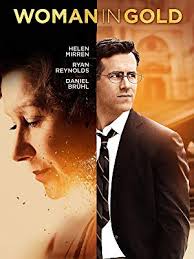 Woman in Gold is a 2015 biographical drama film directed by Simon Curtis and written by Alexi Kaye Campbell.
Woman in Gold is a 2015 biographical drama film directed by Simon Curtis and written by Alexi Kaye Campbell.